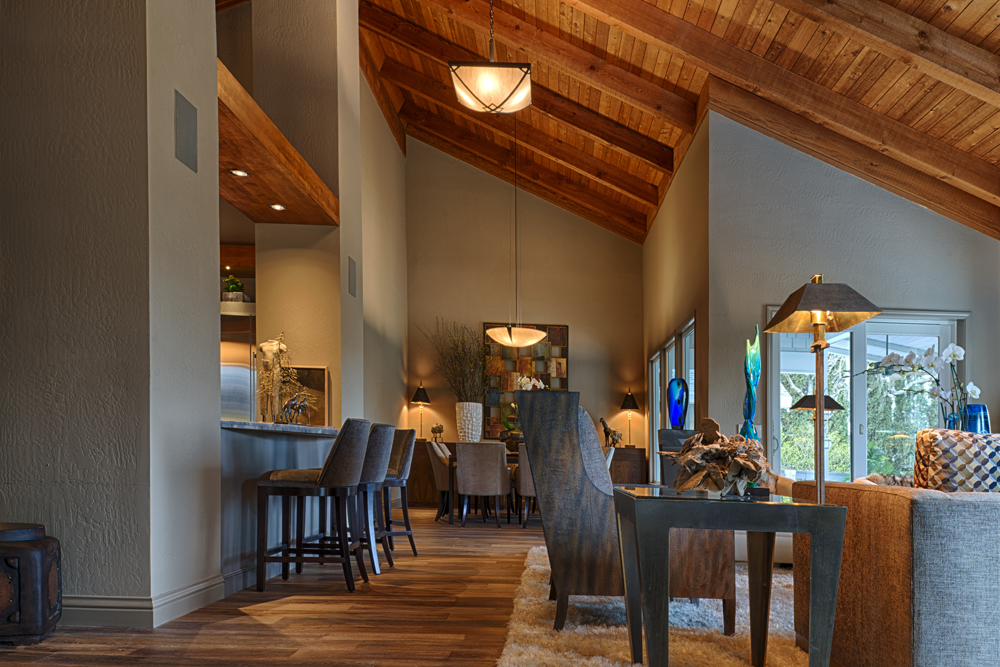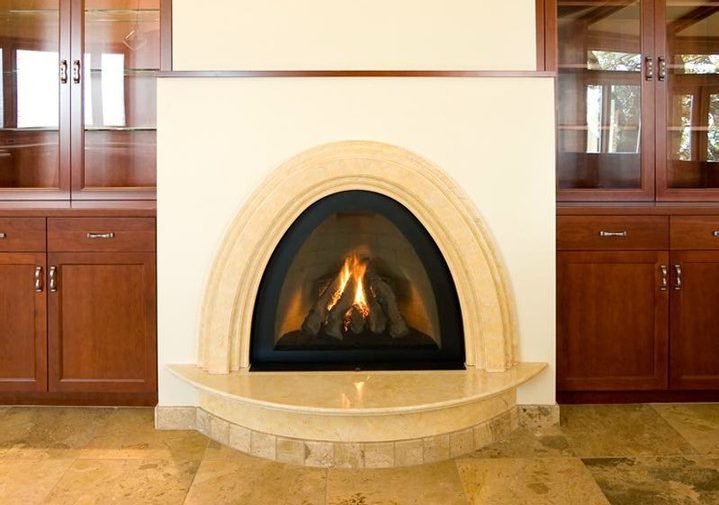
To prepare your California home for winter, you’ll need to perform interior maintenance tasks in addition to exterior measures. Photo: J. Hettinger Interiors ©2018
California winters may be mild, but it’s still important to perform home winterization tasks in the fall. In our previous article, we covered exterior home winterization. In this segment, we’ll go over some interior maintenance steps to help you prepare your California home for winter.
Service your furnace.
Many homeowners take their central heating systems for granted, but this can be a risky move. When a furnace isn’t properly maintained, it performs less efficiently (which results in higher energy bills) and is more likely to malfunction and cause subsequent safety hazards. To prevent these kinds of issues, it’s best to be proactive about furnace maintenance, especially before winter. Here are some key steps:
- Test your furnace early. That way, if it’s not working properly, you’ll have time to fix it before it’s needed.
- Check your furnace filter and change it if needed. To get better air filtration, consider upgrading to a filter with a MERV rating of 9 or higher.
- Have your furnace inspected and serviced by a professional. This will ensure your system is working properly and rule out any potential hazards.
For more information on getting your furnace winter-ready, read our related article.
Maintain your fireplace.
If your home has a fireplace or wood-burning stove, you’ll need to make sure it’s ready to perform throughout the winter. When a fireplace or stove isn’t maintained, it can lead to safety hazards like chimney fires or carbon monoxide poisoning. That’s why it’s always a good idea to have yours professionally cleaned and inspected in the fall.

To avoid potential hazards, it’s wise to have your fireplace professionally serviced prior to winter. Photo: Harkey Construction, Inc. ©2018
Inspect your water heater.
Being without hot water is never fun, but the displeasure is compounded during colder times of year. You can reduce the chances of water heater failure during winter by performing an inspection in the fall. In addition to checking for water leaks at connections and in the drip pan, clean the air intake screen to ensure the burner is receiving enough oxygen. Furthermore, if you haven’t flushed your water heater’s tank in more than a year, it’s a good time to do this as well.
Check and upgrade safety devices.
Along with the increased use of heating devices during winter comes an increased chance for house fires, gas leaks and other potential hazards. To safeguard yourself and your loved ones, make sure smoke and carbon monoxide detectors are placed throughout your home and test them for proper functionality. If you’re still using conventional battery-operated detectors, consider upgrading to the new standard models. Instead of relying on conventional batteries, today’s smoke and CO detectors are equipped with built-in, tamper-proof batteries that have a 10-year lifespan. The goal of this design change is to minimize human error (i.e. forgetting to replace the batteries) and thus reduce the number of fire-related deaths caused by negligence.
Besides making sure smoke and CO detectors are functioning properly, make sure you have at least one fire extinguisher in the house. Residential fire extinguishers should be rated for all fire types—look for an A-B-C rating on the label. Verify all fire extinguishers in your home are in working condition and replace any that are more than six years old.
Weatherproof doors and windows.
Putting weather stripping on the insides of doors and windows will provide additional protection against air transmission from outside your home. While weatherproofing your windows, look for moisture on the insides of the panes—this may be a sign that the window’s seal has deteriorated. If the issue persists, consult a window professional.
Seal your attic floor.
Besides poorly insulated windows and doors, one of the most common ways conditioned air escapes the home is through gaps between the attic floor and the living space below. A good way to prevent this is to have your attic floor professionally sealed. By improving insulation and caulking gaps and cracks, attic floor sealing will simultaneously increase your in-home comfort and decrease your heating bills. But that’s not the only benefit this simple home improvement measure provides. To learn more, watch this video by Diamond Certified Expert Contributor Greg Sutliff of Alcal Specialty Contracting, Inc.
Test interior lights.
With winter’s reduced daylight hours, it’s a good idea to make sure your home’s interior lights are functioning properly. Go around your home, test all light fixtures and replace any bulbs that look dim. If you want to save money on your electrical bills, consider upgrading from incandescent lighting to LED. LEDs last thousands of hours longer than incandescent bulbs and expend a fraction of the energy, so they’re a worthwhile investment.
